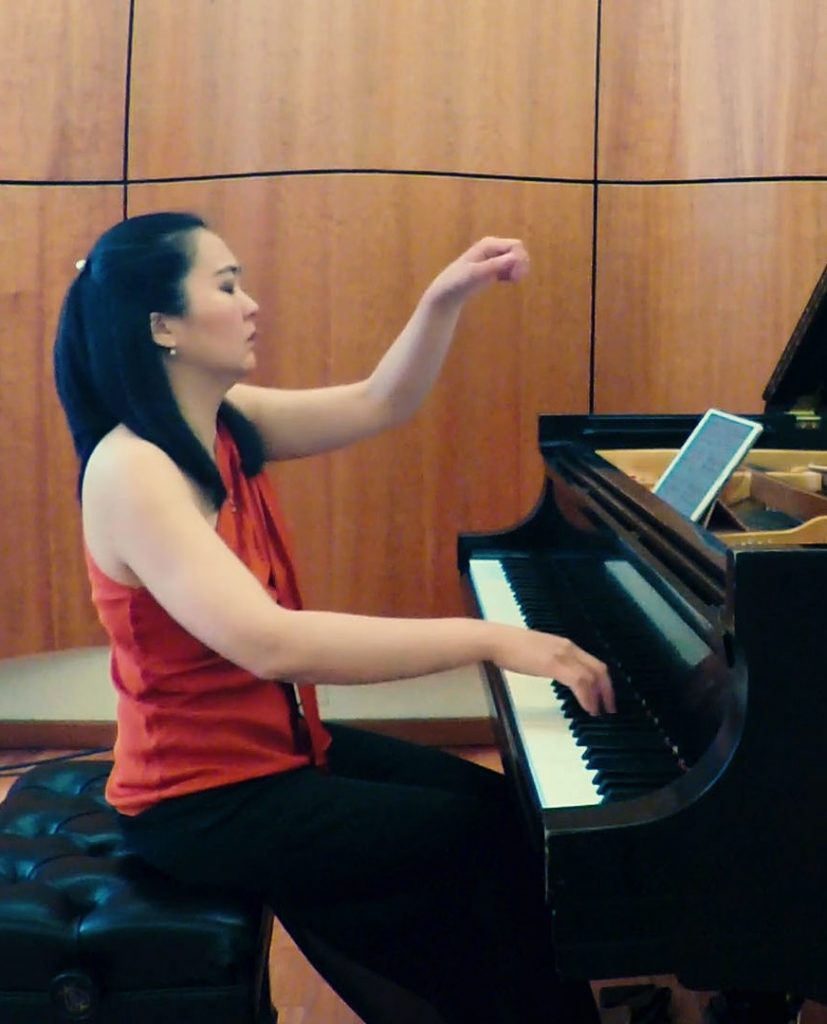Former students and Frost colleagues pay tribute to the legacy of Dennis Kam

Dennis Kam was a member of the faculty of the University of Miami School of Music from 1974 to 2013, becoming chairman of the Composition and Theory Department. Kam (who held degrees from Oberlin Conservatory, the University of Hawaii and the University of Illinois Champaigne-Urbana) wrote 170 works in the course of his career.
On Saturday afternoon Kaleidoscope MusArt presented “The Living Legacy of Dennis Kam,” a streamed tribute that featured four of his piano scores and works by three of his former students. Kam’s wife Cynthia Chun Kam offered a biographical essay, Kam’s longtime friend and Frost colleague Professor John van der Slice provided commentary, and the other composers introduced their music and recalled their time studying with Kam.
In March the UM Frost Opera Theater presented his Opera 101, a delightful ten-minute romp that satirizes operatic conventions. Yet the four works performed in this tribute underscored the uneven quality of Kam’s output. Some of his more abstract creations tend toward a severe gravitas that can prove difficult for the listener and interpreter alike.
The three sections of Ontonologies: Pre Socratic Etudes (1979) verge from rhythmically compelling to wavering incoherence. “Heraclitus – change (everything is in a state of flux)” effectively deploys short repetitive thematic fragments at a hard-driving pace. “Democritus – atoms” seems to run out of invention all too quickly, the musical line wavering and lacking clarity. An almost jazz-like figuration drives “Parmenides-permeance (there is no change or all is one)” to a bright conclusion. Maria Sumareva masterfully articulated Kam’s complex pianistic writing, bringing nuanced dynamics and intense penetration to these character pieces.
Kam’s Piano Sonata No. 1 (2002) effectively contrasts stern proclamatory passages with rapid pulsation that suggest boogie-woogie or rock influences. The work’s twelve-minute span ends with surprisingly dark overtones. Inesa Gegprifti brought authority and skill to the rapid-fire writing and conveyed the sonata’s curious mix of high modernity and populist styles. (Gegprifti is founder and president of Kaleidescope MusArt, an adjunct faculty member at the UM Frost School of Music and a critic for South Florida Classical Review.)

D-Bop – Sonata No .2a offers a rather arid exercise in percussive minimalism that lacks the propulsive joy and vigor of Steve Reich and Philip Glass’ essays in that genre. Lindsay Garritson was fully equal to the knuckle-busting speed and relentless energy the score demands. Garritson (who gave a dazzling performance of Prokofiev’s Concerto No. 2 with the Frost Symphony Orchestra No. 2 in 2017) has technique to burn and fully deployed her formidable dexterity to make the best case for Kam’s 2010 creation.
The Epistemology of Delicate Time in Blue Three (1982) was the most enticing of the Kam works on the program. The tonal coloring and textures of this composition are striking and an aura of mysticism and stillness pervades the work. Alan Johnson, director of the Frost Opera Theater, brought out the poetry and delicacy of this keyboard vignette.
Charles Norman Mason succeeded Kam as Chair of Composition and Theory at the Frost School of Music. He related that one of the most important things he learned from his studies with Kam was the economy of means in crafting scores. The Blazing Macaw (1992) mixes electronics and acoustic music, the rhythmic patterns of the taped track blending smoothly with the piano line. Akina Yura’s digital acuity and power, tempered by finely shaded hues of tone, served Mason’s wild ride well.
Dorothy Hindman, a faculty member at UM Frost, recalled that Kam encouraged his students to find their own voice rather than follow any stylistic agenda. Hindman’s fin de cycle for muted piano and tape (1997) is a review of twentieth century musical fashions from impressionism to neo-romanticism and minimalist paths, voiced in modernist terms. Redi Llupa skillfully conveyed the momentum of Hindman’s tour of changing compositional tends.
Orlando Jacinto García, a faculty member of the music department at Florida International University, felt that Kam had a strong impact on his musical thinking and aesthetics. García’s Recuerdos de otra mύsica para piano (1990) is a study in contrasts between brief fragments at top volume and more expansive, textured quiet sections. Emiri Nourishirazi captured both the calm stasis and tartness of García’s work.
Kam’s compositional legacy remains a question mark. But he was clearly an inspired teacher and his students, who revered him, may be his greatest artistic contribution as they enrich the repertoire by creating new works and mentoring students both locally and around the globe.
Kaleidoscope MusArt presents “Beethoven in the New World” with pianist Reed Tetzloff playing works by Beethoven, Charles Ives, Jonathan Dave and Clarence Barlow 7:30 p.m. September 23 at Granada Presbyterian Church in Coral Gables and online 5 p.m. October 9. kaleidoscopemusart.com
Posted in Performances
One Response to “Former students and Frost colleagues pay tribute to the legacy of Dennis Kam”
Leave a Comment
Sun Jun 27, 2021
at 1:09 pm
1 Comment

Posted Jul 05, 2021 at 8:55 am by Kevin Kenner
This was such an inspiring tribute to Kam’s music. Made me want to go out and learn some of his piano music. Kudos to Kaleidoscope for putting this out there.